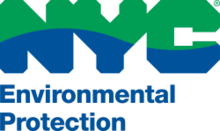About the NYC Water Challenge and Water Saver Competition with Erik Eibert
In anticipation of the Water Saver Poster Competition, here is an interview with Erik Eibert of why water conservation is so important at The New School and what we can all do about it.
What is the NYC Water Challenge and why is being involved important?
The NYC Water Challenge to Universities is a commitment to voluntarily reduce water-use 5% by the summer of 2020. The Department of Environmental Protection (DEP) oversees the NYC water supply, and this is a campaign to demonstrate progress and raise awareness of water scarcity issues. Some cities have been crippled in the past, or are increasingly likely to experience water-supply issues- particularly on the West Coast. NYC does not have the degree of water supply problems that other cities do and so there is some security in that regard, but that’s not a way of thinking or general philosophy we want to adopt in preparing for the future.
Universities are great environments to pilot conservation programs because they’re at the cutting edge of research and activism on environmental issues, and there’s bountiful energy and interest in the student-body to be directed toward progress and demonstrating externally what’s possible. Universities are often willing to innovate and dedicate resources toward worthwhile causes in many dimensions.
What are ways that the New School is reducing water consumption, and what more can be done?
There are already water conservation initiatives in place throughout The New School. The University Center Wastewater Recycling Plant has among the biggest impacts on campus, and it’s a unique feature that’s pretty rare among buildings. The plant has the ability to recycle wastewater from the building for reuse in non-potable fixtures like water closets, urinals and mechanical systems.
We’re also installing low-flow fixtures that use much less water- for instance recently in Loeb Hall (135 East 12th Street), Alvin Johnson Hall (66 West 12th Street), and Parsons East (25 East 13th Street). We’re close to having real-time metering of water in every one of our buildings- visible via our sustainability dashboard. Analytical tools are important for tracing issues like leaks which are otherwise hard to detect through traditional water bills. Another big factor in water-use is behavior- for example, through the length of showers we take, by reporting issues like leaky faucets, and air-conditioning use which in many of our buildings consumes water through cooling towers which are a component of the system.
Could you briefly explain how the green roof at University Center works and its connection to water?
As opposed to concrete which is impervious, the green roof absorbs water. Many of the sewers in NYC are combined sewer overflow, meaning that they carry both sewage and stormwater runoff. When there’s a large rain event, there’s an opportunity for that water combined with sewage to overwhelm the system capacity and lead to local river pollution. Anything we can do to reduce or retain stormwater helps to reduce this problem. Many new buildings including the University Center have water storage designed to act as a buffer and release water from a rain event more slowly over time.
Can the water being collected from the roof be reused?
It can be, but depends on where water in the building is being used. We recycle enough water to supply the aforementioned fixtures and mechanical systems, but because we’re always bringing in fresh water for drinking- some of which goes down the drain, there’s generally a natural surplus of water available to be recycled, and therefore no need to use water from the roof.
How can students play a part in the reduction of water consumption?
Showering is one of the biggest water-consumers- typically at the rate of around 2 gallons per minute. A mindful shower length is one of the most important thing students can do to reduce water-use. Additionally, because its hot water, there’s a lot energy involved to heat it (just think of how long it takes to heat up a pot of water on the stove). Another common issue is broken toilets that continue to run until they are fixed.
It’s easy to assume things are working correctly and to have an out of sight out of mind approach, but facilities staff aren’t often in suites or suite bathrooms to observe potential problems, so if there is an issue, it’s helpful to note in a facilities work order under Maintenance and Housekeeping.
What about using the water fountains on campus versus buying bottled water?
We advocate for people to use drinking fountains and water bottle filling stations in lieu of buying bottled water. That makes our apparent building water usage a bit higher, but from a systems perspective it’s more sustainable and less-expensive option than buying plastic bottles.
Erik Eibert, PE, Director, Energy Management & Sustainability at The New School
Erik directs campus sustainability strategies & long term planning, including a 15 year goal to cut carbon emissions and energy consumption by 40%. He also works with many campus departments including students, faculty, and staff on matters of sustainability.



